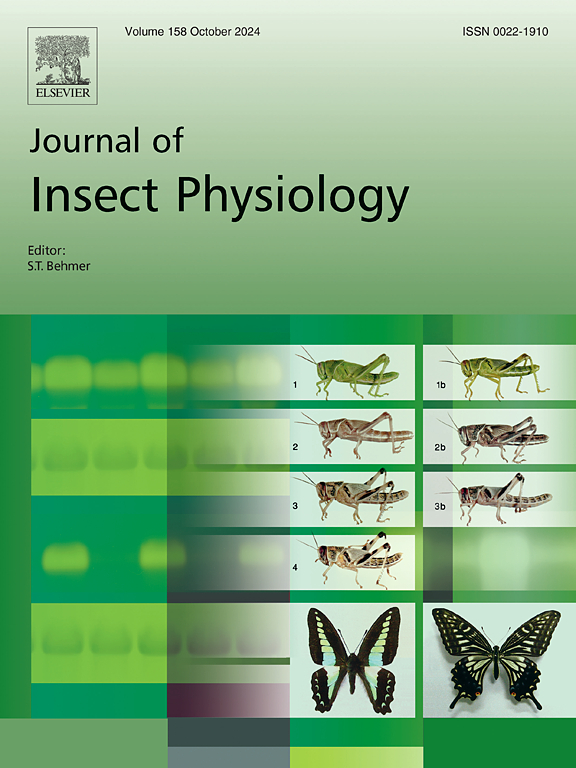Fusion of silkworm polar body nuclei
IF 2.3
2区 农林科学
Q1 ENTOMOLOGY
引用次数: 0
Abstract
Polar bodies are produced during the development of oocytes. In many animals, polar bodies extrude from the egg and typically degenerate after the meiotic maturation of the oocyte. However, in insects, polar body nuclei remain within the egg and neither extrude nor degenerate during early embryogenesis. Previously, we reported that in the silkworm (Bombyx mori), the polar body nuclei differentiate into serosa cells. In this study, we observed the behavior of polar body nuclei during early embryogenesis using a tissue clearing method. Individuals with a reduced number of polar body nuclei were observed around 4–6 h after egg laying during incubation at 25℃, and after 6 h, the polar body nuclei were observed to have increased in number in some individuals. Analysis using serosa cell mutants (pe and re) revealed that most of the polar body-derived serosa cells had undergone fusion of the polar body nuclei. These findings indicate that in silkworms, polar body nuclei fuse approximately 4–6 h after egg laying, which corresponds to the cleavage stage, during which fertilized nuclei divide into several to dozens of nuclei. In some individuals, the fused polar body nuclei divide, increase in number, and differentiate into serosa cells.

蚕极体核的融合
卵母细胞在发育过程中产生极体。在许多动物中,极体从卵中挤出,并在卵母细胞减数分裂成熟后退化。然而,在昆虫中,极体核留在卵内,在胚胎发生早期既不挤压也不退化。以前,我们报道了家蚕(Bombyx mori)的极体核分化为浆膜细胞。在本研究中,我们用组织清除法观察了极体细胞核在早期胚胎发生过程中的行为。在25℃孵育过程中,产卵后4 ~ 6 h左右出现极体核数减少的现象,6 h后个别极体核数增加。对浆膜细胞突变体(pe和re)的分析显示,大多数极体衍生的浆膜细胞经历了极体细胞核的融合。这些结果表明,蚕的极体核在产卵后约4-6小时融合,这相当于卵裂期,在此期间受精卵核分裂成几个到几十个核。在一些个体中,融合极体核分裂,数量增加,分化为浆膜细胞。
本文章由计算机程序翻译,如有差异,请以英文原文为准。
求助全文
约1分钟内获得全文
求助全文
来源期刊

Journal of insect physiology
生物-昆虫学
CiteScore
4.50
自引率
4.50%
发文量
77
审稿时长
57 days
期刊介绍:
All aspects of insect physiology are published in this journal which will also accept papers on the physiology of other arthropods, if the referees consider the work to be of general interest. The coverage includes endocrinology (in relation to moulting, reproduction and metabolism), pheromones, neurobiology (cellular, integrative and developmental), physiological pharmacology, nutrition (food selection, digestion and absorption), homeostasis, excretion, reproduction and behaviour. Papers covering functional genomics and molecular approaches to physiological problems will also be included. Communications on structure and applied entomology can be published if the subject matter has an explicit bearing on the physiology of arthropods. Review articles and novel method papers are also welcomed.
 求助内容:
求助内容: 应助结果提醒方式:
应助结果提醒方式:


